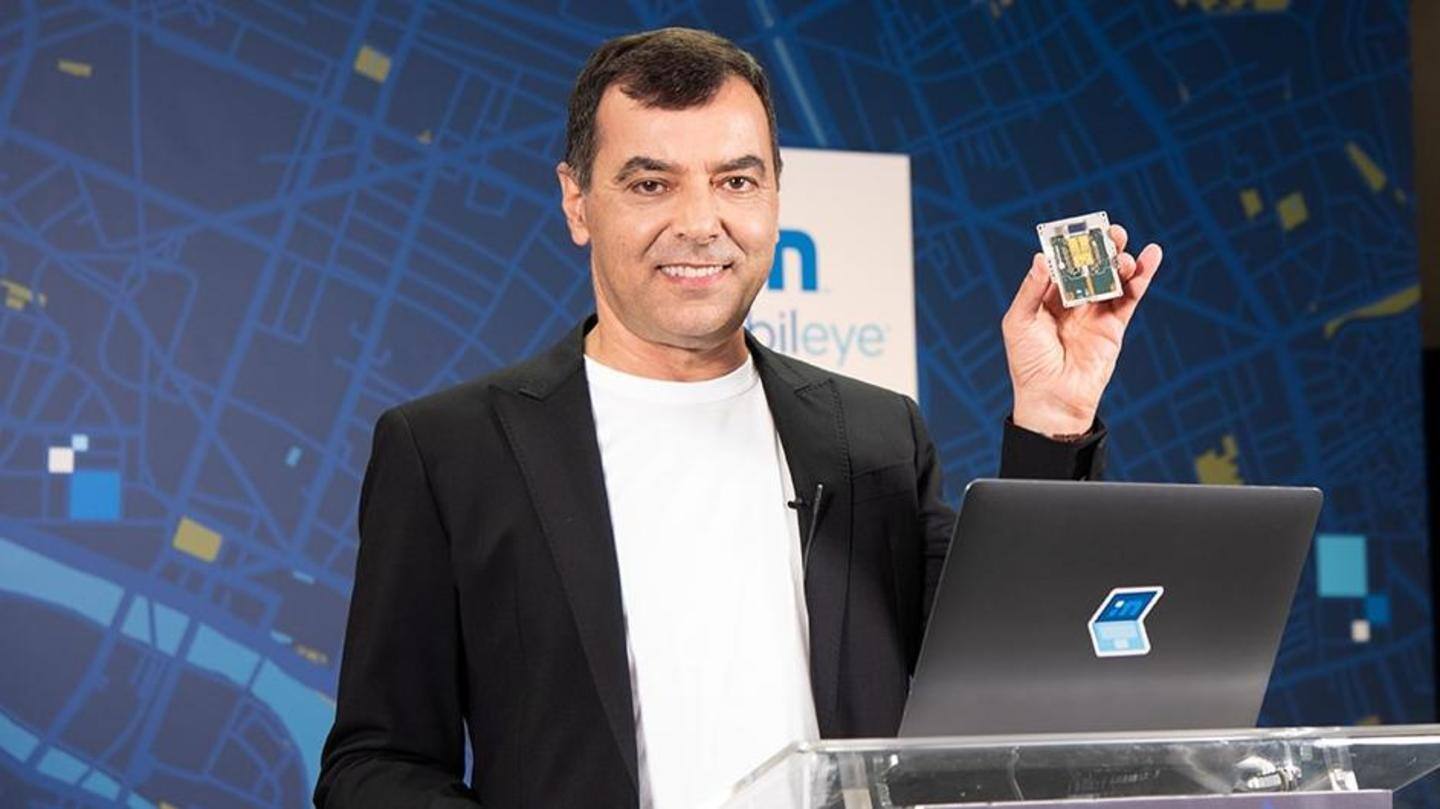
#CES2021: Intel's Mobileye reveals plans to lower autonomous driving cost
What's the story
At the ongoing CES 2021, Mobileye - Intel's self-driving car subsidiary brand - has announced that it will shift toward using its own radar-based technology so as to reduce the cost of autonomous driving.
Mobileye's Chief Executive Amnon Shashua said that the company is developing its own LiDAR sensor, which it plans to start using in cars by 2025.
Here are more details.
Technicality
At present, the company uses a camera-based system
Mobileye currently uses a camera-based system that provides adaptive cruise control and lane change assistance in cars. This technology also gathers data to help map roads in cities.
For next-generation systems, the company will add LiDAR, which will help self-driving vehicles get a 3-dimensional view of the road, as well as proximity radar sensors, which can detect distance from objects.
Information
Mobileye's robot-taxis shall grace the roads in 2022
Mobileye's first batch of robot-taxis will use sensors from Luminar Technologies to get a 360-degree-view area view, radar-based object detection, and multiple cameras for all around coverage. These vehicles will be rolled out in at least eight cities starting in 2022.
Timeline
In-house LiDAR technology to be used from 2025
Mobileye is working on its own LiDAR sensor, which it plans to use in cars from 2025.
The new system will sport one unit facing the front of the vehicle, while a new radar-based system and optical cameras will cover the car in its entirety.
The company is also developing new ways to process radar data with software to further improve these radar sensors.
Quote
Chief Executive Amnon Shashua: Radar is significantly cheaper than LiDAR
"The difference between radars and LiDARs in terms of cost is an order of magnitude. No matter what people tell you about how to reduce LiDAR's cost, radar is ten times lower. We are building LiDARs, so I know exactly the cost of the LiDARs."
New market
Self-driving tech to be given to automakers as separate components
In a statement, Mobileye says it will continue to use Luminar LiDARs "as much as possible" even after launching its own LiDAR sensors.
The company plans to provide its self-driving technology to automakers as separate components, suggesting carmakers will be able to choose a Mobileye system but opt for Luminar sensors for the LiDAR units.